Might of an industry
The pesticide industry in
India is the fourth largest in the world and second largest in the Asia-Pacific region,
only after China. Estimates of its total market value vary between Rs 3,800 and Rs 4,100
crore. According to the Pesticides Manufacturers and Formulators Association of India
(PMFAI), there are around 55 basic producers and 300 pesticide formulators. Besides, there
are a number of small-scale players. Around 200-odd generic products are manufactured in
India. Insecticides alone account for around 75 per cent of this market and the cotton
crop consumes almost half the pesticides produced in the country. Pesticides exports stood
at Rs 1,600 crore in 2000-2001 and the industry is confident that it will reach Rs 1,800
crore during this financial year.India is the largest producer of endosulfan in the world,
according to EMFA. Three major companies produce endosulfan in India — Excel
Industries, Hindustan Insecticides Limited (HIL) and eid Parry. Of these, Excel is the
market leader as far as endosulfan is concerned (see box: Endosulfan
peddlers). Therefore, it is not surprising that many of its
officials have been visiting Kerala for the past one year trying to get the state
government to lift the ban. "S Ganesan and other officials of Excel Industries have
been spending a lot of time in Kerala meeting senior government officials and
scientists," says Sridhar R, an activist working with Thanal Conservation Action and
Information Network, a Thiruvananthapuram-based NGO.
 The managing director of the Excel Industries, Ashwin C
Shroff, refused to speak to Down To Earth saying that the magazine had a certain
viewpoint. But he cannot deny that endosulfan dictates his company’s business
interests. "We are acutely aware of our dependence on endosulfan. That is why in the
last 6-7 years from a very high dependence of over 60-65 per cent, we have come to a level
of less than 40 per cent. But it is like a flagship product," he told Business
Line (January 21, 2001). Profits had to be protected at all costs. And thus began the
campaign. The managing director of the Excel Industries, Ashwin C
Shroff, refused to speak to Down To Earth saying that the magazine had a certain
viewpoint. But he cannot deny that endosulfan dictates his company’s business
interests. "We are acutely aware of our dependence on endosulfan. That is why in the
last 6-7 years from a very high dependence of over 60-65 per cent, we have come to a level
of less than 40 per cent. But it is like a flagship product," he told Business
Line (January 21, 2001). Profits had to be protected at all costs. And thus began the
campaign.
The art of disinformation
In May 2001, an innocuous-looking advertisement appeared in a Bangalore-based daily. PMFAI
had issued "a clarification on endosulfan" (see advertisement). The health
problems in Kasaragod district were not due to endosulfan and that endosulfan was a
‘registered’ and safe pesticide, it said. This clarification was issued for the
"benefit of users and general public and to clarify the incorrect impression created
by the media reports".
The advertisement was a
damage control exercise. Every newspaper and television channel worth its name had
extensively covered the endosulfan tragedy in Padre. The plight of Padre villagers with
cases of cerebral palsy, mental retardation, cancer and other diseases captured the public
imagination. Endosulfan was becoming a bad word for everyone. "The advertisement was
given in the newspapers to educate the people (sic). We were not concerned about
the reports for the first three months. Later we realized that we had to intervene as this
was wrong," argues PMFAI president Pradeep P Dave. The association organised a number
of press conferences in Kerala claiming that endosulfan was being used in over 60
countries. Environmentalists in Kerala question the motive behind organising so many press
conferences within a short period of time. "This was clearly to mislead the
people," says Jayakumar C, coordinator of Thanal.
In June, articles taking
up the cause of endosulfan appeared in magazines like Agriculture Today. One such
article by E V V Bhaskara Rao, director, National Research Centre for Cashew in Puttur,
Karnataka, said: "First convict the suspect then conduct the trial." Obviously
referring to the CSE study. This quote became the most preferred quote for the pesticide
lobby. Ganesan became his biggest fan and wrote a letter showering praises:
"It’s a masterpiece, a perfect blend of scientific information and literary
skill." (see p28-29) In another article, S K Handa, former head of the division of
agricultural chemistry at ICMR, alleged that CSE’s study was "questionable"
and "pseudoscientific". It is another matter that these experts could not find
any scientific inaccuracy in CSE’s study (see ‘Pesticide Plot’, Down To
Earth, Vol 10, No 10).
ENDOSULFAN PEDDLERS |
Excel Industries
Managing director: Ashwin C Shroff
Installed capacity: 6,000 metric tonnesHindustan
Insecticides Limited (HIL)
Chairperson and MD: Rajendra Mohan
Installed capacity: 1,600 metric tonnes
EID Parry
Executive chairperson: M V Subbiah
Installed capacity: Data not provided |
Dave lapped up whatever
Handa had to say. Speaking to Business Standard, Dave said that "the
endosulfan issue has been exaggerated." One PMFAI member went on to blame the cause
for the "strange diseases" on inbreeding — "many of those affected by
these maladies are reported to be related to each other".
On background radiation, this association offered many explanations, "it could be
microbial contamination of water in streams. Or heavy metal contamination. Or poor
nutritional levels." In other words, anything else under the sun. But not endosulfan.
Science of manufacturing data
The disinformation campaign brought only limited dividends for the pesticide lobby. They
still needed a "scientific" study to counter the CSE study. And they didn’t
have to wait long. In February 2001, a Kerala Agricultural University (KAU) team, headed
by M Abdul Salam, associate dean, College of Agriculture, Kerala Agriculture University,
conducted a study in Kasaragod. The results were astonishing. No significant residues of
endosulfan were found in any of the samples. The industry couldn’t have asked for
more. And they went to town with the findings. But there were only a few takers.
| LEAD PERFORMERS IN THE ENDOSULFAN TRAGEDY |
>>>T H E A C C U
S E D
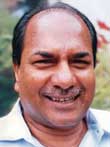 A K ANTONY A K ANTONY
Chief minister, Kerala
His government lifted the ban despite ICMR’s recommendation to stop endosulfan use
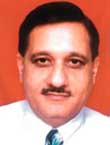 ASHWIN
C SHROFF ASHWIN
C SHROFF
Managing director, Excel Industries
His company is the largest producer of endosulfan in India
 PRADEEP P
DAVE PRADEEP P
DAVE
President, Pesticide Manufacturers and Formulators Association of India
The mastermind behind the industry’s campaign
>>>T H
E I N S I D E R S
N G WAGHLE
Former vice-president, Pest Control India Limited
"Industry’s lobby with the government is so strong, they can probably buy out
the government too"
P D DESHMUKH
Senior pesticide industry expert
"Registration of pesticides in India is a big tamasha. Corruption in CIB is
rampant."
>>>T H E C
R U S A D E R S
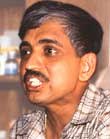 MOHANA KUMAR Y S MOHANA KUMAR Y S
A doctor from Padre
He blew the lid on the tragedy and is fighting for the victims
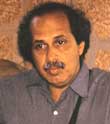 SHREE PADRE SHREE PADRE
Freelance journalist and farmer from Padre
He provided a network for activists fighting the industry
 JAYAKUMAR C JAYAKUMAR C
Coordinator, Thanal
His NGO spearheaded the fight against the industry in Kerala |
The KAU study has become somewhat of a joke among learned circles. Differences
within the KAU team have cast a shadow over its credibility. Thomas George, who did the
residue analysis, has washed off his hands as far as the sampling process is concerned.
"I never visited that place (Kasaragod), so I do not know how the samples were
collected and from where they were collected. I simply did the residue analysis for the
team," says George. He is also quick to point out that he was only involved with the
KAU team in the first round of analysis. "I was not involved the second time,"
he says. But other scientists in the team swear that George was involved in both the
analysis — the papers clearly mention his name in both the teams.
Activists allege that
Salam and Samuel Mathew, another member of the KAU team, were hobnobbing with industry
representatives. "I met them only to get the scientific studies on endosulfan,"
defends Mathew. Mathew’s situation is akin to a judge asking the accused for evidence
to save him. Salam says that he was not influenced by anyone. Moreover, even the KAU team
admitted the problems faced during their investigation in their report:
"Non-availability of quick and reliable methods to assess the level of endosulfan
contamination in the environmental, animal and human samples." Activists and
people’s groups in Kerala have rejected the KAU study.
The endosulfan conspiracy
took a new turn when the PCK commissioned the Fredrick Institute of Plant Protection and
Toxicology (FIPPAT) in Kancheepuram, Tamil Nadu, to conduct a study at a cost of Rs 7
lakh, according to PCK. Controversy has trailed this study from the onset. Villagers of
Padre and other areas refused to cooperate with this team to collect samples as they knew
that it was an industry-sponsored study. "We did not even know when they collected
the samples," says Shree Padre, a journalist-farmer who along with Mohana Kumar Y S,
a doctor in Padre, have been protesting against the spraying for many years. "Later
we came to know that the samples were collected from young PCK workers, and not from the
villagers," says Sripathy Kajampady, a doctor in Kasaragod who has been fighting for
the victims. FIPPAT director Balakrishnamurthy refutes these allegations: "We did a
scientific collection with the help of proper authorities." Members of the Achyuthan
committee — constituted by the state government — are however, far from
satisfied. They have criticised the report for improper sampling and also the lack of
cross checking the findings at a different lab.
The pesticide lobby was
quick to question CSE’s study saying that it had used concentrated sulphuric acid and
so it should be verified by an independent residue expert. It is another matter that while
the CSE study did not use sulphuric acid on blood samples, the FIPPAT study, which the
industry lapped up, did.
It is unbelievable. CSE
collected the samples a few days after the spraying and found high levels of endosulfan in
all the samples. "The FIPPAT study, though started one month later than CSE, shows
just the opposite results, that is, complete absence of endosulfan residues in blood, cow
milk and water samples," says the NIOH report.
Moreover, NIOH, which did
its study almost 10 months after the last spraying, found endosulfan residues in water
samples collected from Kasaragod. NIOH also found residues in the blood samples of
children of Vaninagar school. "The detection of endosulfan in the blood samples of
children and water samples, 10 months after the last aerial spraying of endosulfan,
signifies a continuous exposure to endosulfan," says the report (see box: What the
report says on p31).
MUTUAL ADMIRATION CLUB
Ganesan’s letter
to Bhaskara Rao |
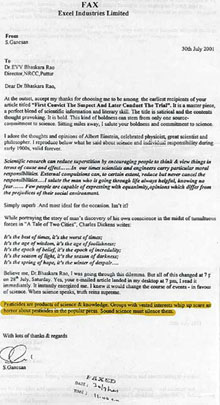 |
Although the FIPPAT study
was commissioned by the PCK, it was released by PMFAI’s Dave at press conferences in
Kozhikode and Thiruvananthapuram, where selective extracts were reproduced for the press.
"This clearly points out the nexus between industry-PCK and FIPPAT," says
Jayakumar. Activists in Kerala and people of Kasaragod have branded the FIPPAT study as a
"well-schemed industry effort".
An interesting incident
that proves the nexus between the industry and private labs took place when the industry
made a presentation before the Achyuthan committee. FIPPAT scientist A Ramesh accompanied
the industry team that included Dave and S Ganesan of Excel Industries. "Ironically,
the FIPPAT scientist did not accompany the PCK team, which had commissioned the
study," says Achyuthan. When Down To Earth asked FIPPAT director as to what
business did their scientist have by accompanying the industry team to a government
committee, he said: "He might have gone in the same car, but was not with them."
When told that Ramesh’s criticism of CSE analysis was recorded in the
committee’s final report, he gave a contradictory reply: "It is not a big crime
(accompanying the industry team). But we are not associated with any industry."
|